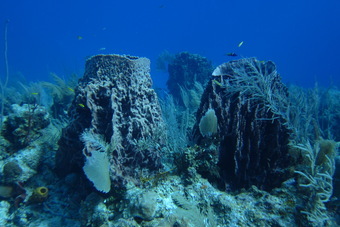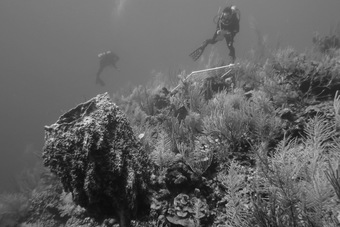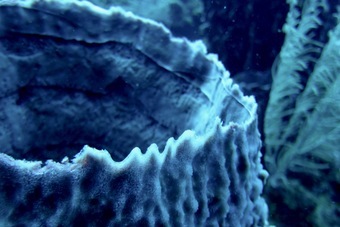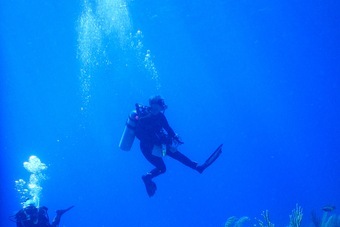Publications:
Morrow et al. 2016
The giant barrel sponge, Xestospongia muta, is a high microbial abundance sponge found on Caribbean coral reefs along shallow to mesophotic depth gradients where multiple abiotic factors change with depth. Sponges were collected along a depth gradient at Little Cayman (LC) and Lee Stocking Island (LSI) and the microbiome of these samples was analyzed using 16S rRNA amplicon sequencing. Statistically significant shifts in community structure and dissimilarity (∼40%) were detected from 10 to 90 m in LC sponges, but a similar shift was not identified in sponges from 10-60 m at LSI (only 17% dissimilar). Additionally, inorganic nutrient levels steadily increased with depth at LSI but not at LC. Based on bulk stable isotopic variability, sponges collected from LC were generally more enriched in 15N and less enriched in 13C as depth increased, suggesting a transition from dependency on photoautotrophy to heterotrophy as depth increased. Patterns of stable isotopic enrichment were largely invariant at LSI, which is also reflected in the more stable microbial community along the depth gradient. It appears that environmental factors that change with depth may contribute to differences in X. muta microbial assemblages, demonstrating the importance of contemporaneous environmental sampling in studies of the microbiome of sponges.
10- 90 m
Mesophotic “mentions”
23 x (total of 5281 words)
Classification
* Presents original data
* Focused on 'mesophotic' depth range
* Focused on 'mesophotic coral ecosystem'
Fields
Community structure
Molecular ecology
Physiology
Focusgroups
Porifera (Sponges)
Bacteria and Archaea
Locations
Cayman Islands
Bahamas
Platforms
SCUBA (open-circuit or unspecified)






